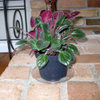kohleria hirsuta
bumble_bee
19 years ago
More Discussions
What color is a kohleria hirsuta supposed to be? I look at pictures on the web and see some with green leaves and some with very dark leaves (like mine).
Here are a couple of green ones:
http://www.jcn1.com/patspets/KOHLER.HTM
http://www.gesneriads.ca/kohler34.htm
and a couple of dark ones:
http://community.webshots.com/photo/72513960/72534152MVDPkm
http://www.bloomlovers.com/kohl
Anyone knows for sure?

bumble_beeOriginal Author
jon_d
Related Professionals
Fillmore Landscape Architects & Landscape Designers · Havre de Grace Landscape Architects & Landscape Designers · Lowell Landscape Architects & Landscape Designers · Oatfield Landscape Architects & Landscape Designers · Towson Landscape Architects & Landscape Designers · Winder Landscape Architects & Landscape Designers · Woodinville Landscape Architects & Landscape Designers · Doctor Phillips Landscape Contractors · Flagstaff Landscape Contractors · Fort Payne Landscape Contractors · Fountain Valley Landscape Contractors · Colorado Springs Siding & Exteriors · New Lenox Siding & Exteriors · Paterson Siding & Exteriors · St. Louis Siding & Exteriorsbumble_beeOriginal Author
ooojen
JohnnieB
JohnnieB
jon_d
JohnnieB
jon_d
bumble_beeOriginal Author
jon_d
ooojen
jon_d